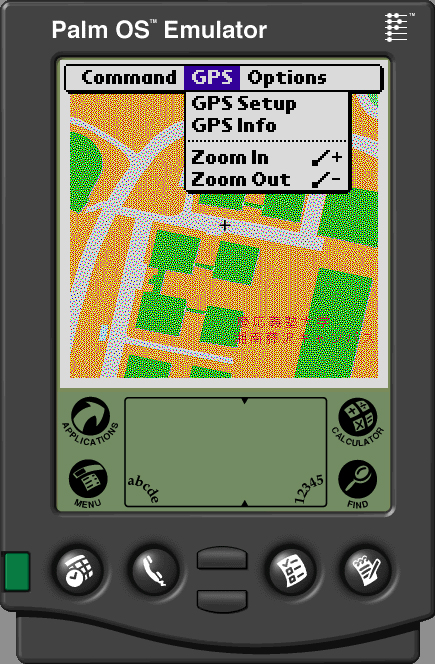
Theme: Designing entertainment for ubiquitous environments
The goal of this study is to create a prototype model for designing multimedia contents intended for ubiquitous environments. The term "ubiquitous" here refers to situations where people can access information virtually anytime anywhere. It does not directly refer to the idea of "ubibiquitous computing" put forth by Mark Weiser. Devices for ubiquitous multimedia include PDA's, mobile phones, original devices, and personal computers (Both desktop and laptop). The spread of these mobile devices and broadband internet allow new forms of entertainment in various scenes of our daily lives.
Spring 2001
1. Location based entertainment: INtown Project
Mobile devices such as PDA's, pocket calculators, watches, and hand held game consoles have been around for quite some time, but until resently, they have not been able to connect to outside networks. PDAs today have email and internet access capabilities as a standard feature. Mobile phones come equiped with web browsers and can run java programs with network support. GPS support is also becoming a popluar feature on phones and PDA's.
Anticipating the spread of such devices, in the spring of 2001 we developed concept models for these devices. Our model included a PalmOS handheld PDA device coupled with a Rand Mcnally Streetfinder GPS module. Our first model design was to make a program that would allow users to mark POIs (Place Of Interest) on a map while actually at the scene, then later type in information about the POI on the PDA or on a PC. This information would then be stored in an online database where users can search for information about a certain scene that others have contributed. This model would allow users to obtain first hand information about a scene/location from a multitide of perspectives. (as opposed to information found in magazines and other organized media , usually intended for commercial purposes)
We drew plans for a second model that replaced the PDA with a mobile phone. We did this for several reasons: 1.By the end of July, PDAs and GPS modules for PDAs had not spread as much as we had first expected. and 2. The time it takes for a GPS reciever to lock onto GPS satellites and start recieving NMEA GPS information took, on average, appoximately two to three minutes. Since the purpose of "location based entertainment" is to obtain information exactly at the moment one wants information; this was too much waiting time. People may use a software contents based on this device out of necessity, but it was unlikely that people would use such a mechanism for the purpose of entertainment.

In the mobile phone model, we decided to use i-mode compatible html, a format aready easily accessible by many users. Users would use forms to submit information about a POI, which would then be stored in a database. This data would be accessible to those members with similar interests in a particlular area (town). Information that would be of immediate interest would be mail to members via email.
Autumn 2001
1. @home Exhibition
In November of 2001, our research group held an exhibition at Version Gallery
in Harajuku, where we exhibited hardware devices designed for communication
in the home environment. Modeling hardware devices for specific purposes and
placing them in a natural senario is another aspect of ubiquitous entertainment.
Although personal computers have made their way into many areas of our lives,
WIMP/GUI interfaces has its limitations. We modeled hardware devices specialized
for certain tasks. These devices where exhibited in a gallery furnished to look
like the inside of a house. Visitors were able to interacte with (experience)
the devices within that senario.
Feel @home Exhibition Web Page
กก
2. User tracking feedback
From Autumn of 2001 and on, we designed and created broadband media contents
for an internet service provider. We created an online "town" where
users can experience contents only accessible through broadband internet. Those
contents include an online art gallery, a theater, a visual chat program and
games.
We collaborated with a user-tracking serviece provider to track which of the
contents were being viewed, by which people, and how long they viewed the contents.
We are in the process of feeding back the information we recieved from anylizing
the user-tracking logs, by changing the behavior of the user's avatars according
to user personallity. User grouping and automated personalization of contents
is an important aspect of ubiquitous entertainment design. The user should not
be prompted again and again to input information about his/herself. Instead
the computer(software) should refer to the database whenever possible, reducing
active input on the part of the user. By anylizing, or assuming the preferences
of a user we are able to present them with less interactive, yet intriguing
"passive" media, We believe that passive media conforms with the idea
of ubiquity